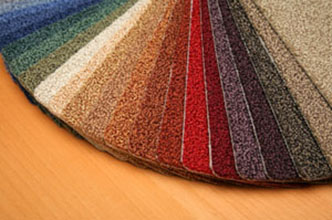 There are three main types of pure carpet fibres available in Australia, namely Nylon, Polypropylene, and Wool. There is also a fourth variety being a blend of these. This may turn out more effective depending on the circumstances.
There are three main types of pure carpet fibres available in Australia, namely Nylon, Polypropylene, and Wool. There is also a fourth variety being a blend of these. This may turn out more effective depending on the circumstances.
Nylon Carpet Fibres
Nylon is by far the most popular carpet fibre used today. It’s durable, versatile, and well priced. It can also be dyed to create a wide variety of colours and designs. Because Nylon is so easy to dye, it can be prone to stains.
To minimize this effect it’s advisable to have the carpet treated with a stain resistant product. Most should already come with some sort of protection, but it’s worth clarifying before you make a purchase. Nylon’s durability means that it’s often used in commercial applications where carpets need to stand up to heavy traffic.
Polypropylene Carpet Fibres
The major advantage of Polypropylene is it’s natural ability to resist stains, and because it’s economical to produce. This has led to increased popularity in recent years. On the downside, it doesn’t stand up to wear like Nylon does and it can be difficult to dye.
Because of lower cost and greater ability to resist staining this carpet type is often used in rental properties, and in the right carpet style it can be very resilient in commercial applications. Another reason it’s used in commercial environments is because it only generates small amounts of static electricity.
Wool Carpet Fibres
Wool is the traditional fibre for making carpets and has been used for longer than any other of the three. It’s also the most expensive material, but is worth considering if money isn’t a concern. In fact it can add a premium appearance to a room.
Wool carpets have a luxurious feel about them and have the benefits of also being fire resistant and great insulators. They are available in more styles than the other fibres, but they are limited in their colour choices. On the negative side wool carpets aren’t as stain resistant as polypropylene
Blends
Blends can be a great way to balance the benefits of multiple fibres. There are a number of different blends used with more common varieties being 50% wool/50% nylon or 80% wool / 20% nylon. Polypropylene can also be used instead of nylon.
By combining wool and nylon carpet, the customer gets the benefits from the spring and feel of wool combined with the durability and toughness of nylon. Blends are often cheaper than full wool carpets and hence a good alternative.
Summary
It’s important to consider your situation and where you will be placing the carpet. Will it be in a high traffic area, is it likely to get messy often, and how much have you got to spend. The answers to these questions will help determine which are the right carpet fibre and carpet styles for you to choose.
Carpeted floors need less frequent cleaning than timber floors in commercial applications, because they absorb the dirt and dust for vacuuming later. They also add a touch of class to any retail outlet. In that sense they are the shopkeeper’s friend and well worth the expense.


